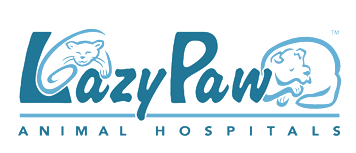Raccoons and Distemper Virus, Companion Animal Risks
J. Hunter, DVM, 3 February 2013
Many clients have expressed concern with regards to recent, local reports of raccoon distemper cases. Closely related to the human measles virus, the viral agent, CDV or canine distemper virus. CDV is typically contracted by animals in an immune susceptible state. In dogs, this means that puppies aged 3 to 6 months are at greatest risk for infection AND have the highest rate of mortality. Unvaccinated adult dogs are also at great risk to contracting this disease. History has shown us that the disease can spread like wildfire, especially under circumstances where high numbers of unvaccinated dogs are housed in close proximity to one another as can occur in overwhelmed animal shelter facilities and unsavory breeding operations or where unprotected dogs are permitted to congregate in dog parks.
This incurable, often fatal and highly contagious viral disease attacks multiple organ systems, most often the central respiratory tree, gastrointestinal tract and central nervous system. It can affect all ages of dogs, ferrets, and as we are seeing currently, raccoons. Susceptible nocturnal animals observed during daylight hours should be suspected of this disease as well as rabies. (In raccoons, distemper outbreaks have a cyclical nature, cases typically being reported every 5 to 7 years and are most commonly noted in the Southeastern United States.) The first signs of the disease are in parts of the body directly contacting a contaminated environment.
Early clinical signs of infection are shared with numerous other conditions: fever, loss of appetite, lethargy and mild eye inflammation, though the latter is typically short in duration and may be overlooked or even dismissed, especially in areas such as ours where environmental allergens produce this symptom frequently throughout the year. Skin lesions common to the disease inspired the historical description of “hard pad disease” which stems from a description of callus formation affecting the patient’s nose and paw pads. In all affected species, the development of neurologic signs indicates progression to a nearly always fatal state; surviving patients almost always have pronounced nervous system deficits.
Treatment is vastly limited and consists of supportive care. To survive, the patient’s own immune system must ultimately do its job so care is geared towards keeping the patient alive and as comfortable as possible while his or her immune system wages war against the viral invader. Regrettably, 50% of infected patients die within 2 weeks to 2 months of initial infection, and owner elected euthanasia is most often performed for patients having developed progressively debilitating neurologic signs.
Points to note:
1. Keep pet vaccinations current. Maternal antibody protection begins to wane between 6 and 12 weeks of age thus a puppy’s vaccination program should start between 6 to 8 weeks of age, and boosters should be administered at regular intervals per your veterinarian’s recommended vaccination schedule.
2. A highly contagious disease affecting wild and domestic carnivores including raccoons, grey foxes, coyotes, skunks and weasels, CDV is most prevalent in the juvenile members of these species so discouraging the presence of susceptible wildlife in areas frequented by dogs is recommended. The following tips can help:
· Keep pet food and water sources indoors at all times to guard against attracting hungry wildlife. (Animals housed out of doors, should have all food remains promptly removed following feeding.)
· Keep bird feeders out of yards so that spilled seeds will not attract wildlife into pet areas.
· Properly secure waste/garbage cans and composting areas against raiding wildlife.
3. “Sweet and friendly” behavior displayed by normally unsociable animals is a symptom of neurologic disease.
4. NEVER EVER feed wildlife. Feeding wildlife puts their lives at risk for many reasons. Increasing congregating population density increases the likelihood of disease spread.
5. Leave capture and care of sick or injured wildlife to professionals. Contact your local animal control office if you see a sick or injured animal.
Residents of the
City of Frisco should call the Animal Control Office: 972-292-5303.]]>
